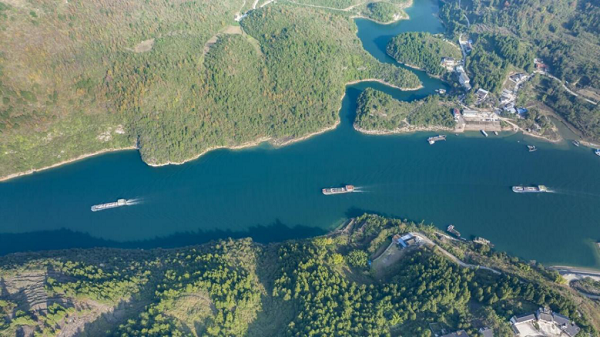Resumed shipping route improves Wujiang River's transport capacity

Wujiang River's shipping route is expected to boost the regional economy and help market Guizhou's products. [Photo/ddcpc website]
After being suspended for about 20 years due to the construction of hydropower stations, the shipping route of the Wujiang River in Southwest China's Guizhou province finally reopened in 2021.
On the day of its reopening, 14 ships carried 6,800 metric tons of phosphate from Guiyang's Kaiyang port to Fuling district in Southwest China's Chongqing municipality.
The cargo was then transferred by large-tonnage ships to Tongling port in East China's Anhui province. With more ships to be put into use in the future, Wujiang River's transport capacity will be significantly increased.
Kaiyang port is the only port that allows the Qianzhong economic zone and Guiyang to reach other rivers and seas, and connects Guizhou with the Chengdu-Chongqing economic circle, the Yangtze River Economic Belt and the Yangtze River Delta region.
Wujiang River is one of the Yangtze River's eight main tributaries and Guizhou's longest river. It has been Guizhou's main shipping lane since ancient times. With its large transport capacity, low carbon emissions, good location and ability to attract companies, the Wujiang River is expected to boost the economic development of surrounding areas and help with the formation of logistics clusters.
Guizhou Navigation and Electricity Development and Investment Co, a main transportation service provider on the Wujiang River, has put 13 500-tonnage ships into service in 2022, and has so far transported 25,000 tons of cargo.
In the future, the company will increase the number of ships to 200 to form a large-scale shipping fleet that will operate regularly. In 2022, the company will invest 200 billion yuan to build 50 500-tonnage ships.
Presented by China Daily.
黔ICP备05001922号-3
